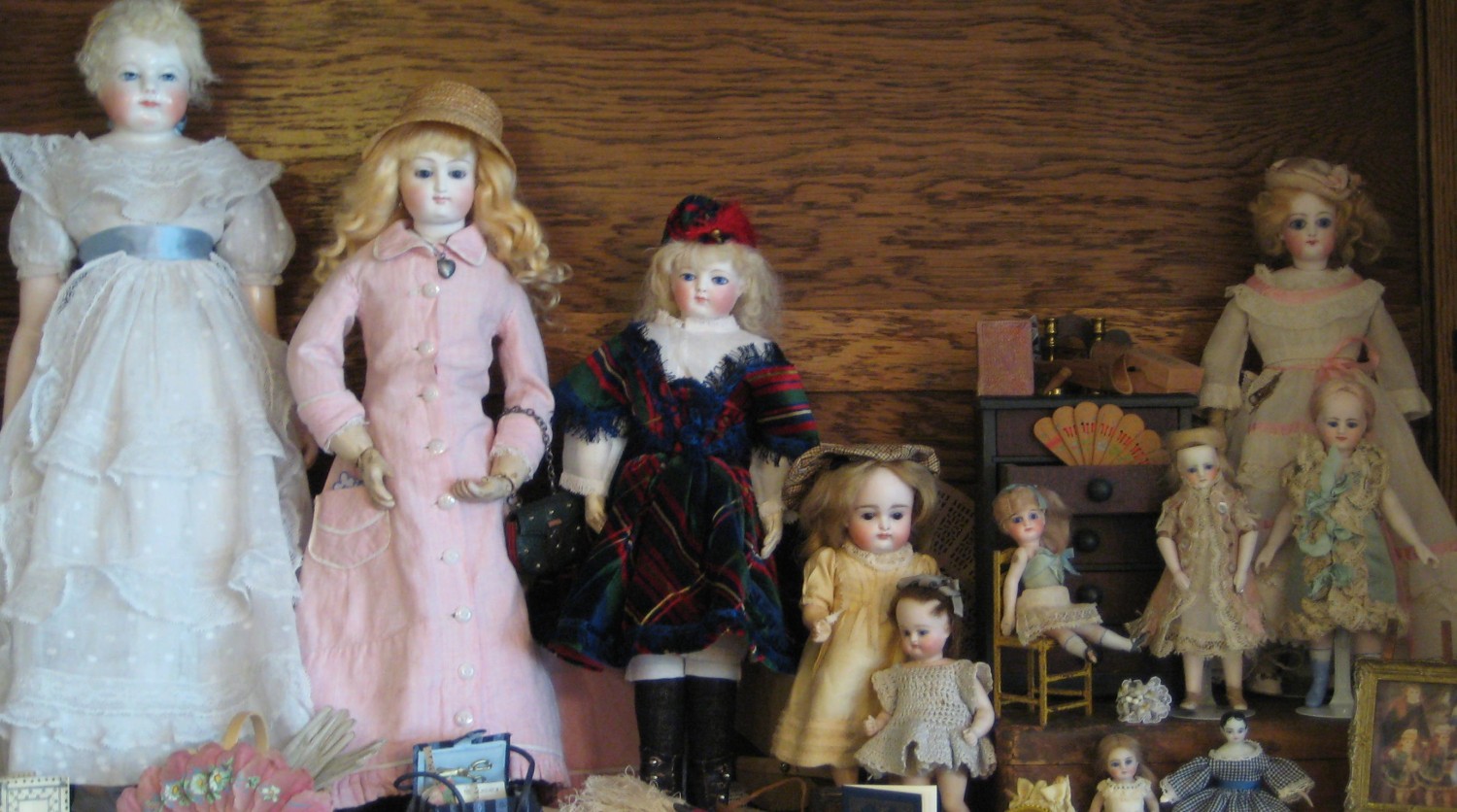One day, I’ll show you how to make shoes for your dolls. I know how, but it’s a bit fidgety. In the meantime, let’s look at some doll shoes made by other people. First, here is a pair of antique heeled boots. They are black leather, decorated with buckles and shiny metal buttons. They belong to this lovely lady. She is a German, painted-eye fashion with such a sweet face. Her … Continue reading
Category Archives: All-Bisque Dolls
Today, I am going to show you how to begin sewing your doll’s slip. We will sew the back seam, finish the open back edges and hem the slip. Next week, we’ll attach the waistband and sew on the lace. Read through the instructions before you begin. At the end, I’ve listed a few hints for easier, faster stitching. In the 19th century, undergarments, blouses and other garments that were … Continue reading
This tiny, all-bisque doll stands just over 2 1/2″ (6.5 cm.) tall and I love her. She is not considered to be a Lilliputian, even though she’s the same size. She was made in Germany and her body, legs and head are all one piece. Only her peg-jointed arms move. This type of doll is often called “early” all bisque, but they probably weren’t made before 1880. Her cobalt blue … Continue reading
Today, I’ll show you how to size a pattern, prepare your fabric, and cut out the pieces of a garment. Also, it’s time to begin to decide what fabric and trim you’ll use for the dress. I have chosen an all-bisque doll who stands 5″ tall to dress. Her early crocheted dress is sweet, but rather blah. First, I am going to make her new undies and a half slip. Both will have … Continue reading
Today’s post is a small one about small dolls. They are tiny, all-bisque dolls known as Lilliputians or les Lilliputiens in French. Most Lilliputians measure only 2 1/4 to 2 3/4 inches (6-7 cm.) tall, have dome heads with swivel necks, painted eyes, peg or wire jointed limbs, and painted blue boots or bare feet. Coleman’s The Collector’s Encyclopedia of Dolls, lists production of Lilliputians as early as 1881-82. They … Continue reading
Many doll collectors search for the most pristine dolls in their original clothing. Doll collectors who love to sew for their dolls often prefer to collect undressed or redressable dolls. I sometimes feel guilty about redressing a doll that came to me in her original clothing. I do not like to feel guilty. Over the past few years, I have enjoyed purchasing naked or redressable all-bisque dolls and transforming them. This … Continue reading

